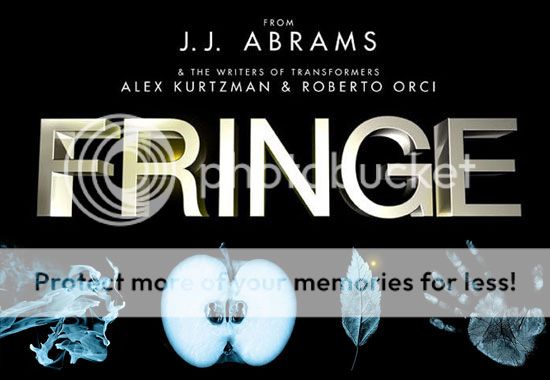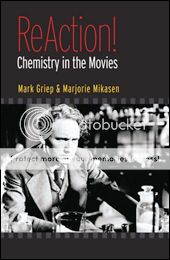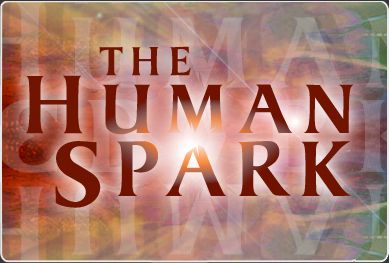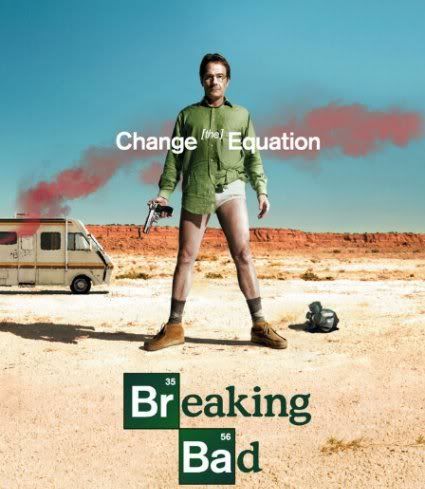Video: ScriptPhD Interviews the Science Advisor of 'Fringe'
Feb1

Fringe images ©2008 FOX Broadcasting Corporation, all rights reserved.
ScriptPhD.com’s coverage of Comic-Con 2009 included an interesting panel entitled Mad Science: The Science Behind Science Fiction, which consisted of a panel of top science fiction shows Eureka, Battlestar Galactica, Eureka, Caprica and Fringe. There, we met Dr. Ricardo Gil da Costa, a neurobiologist who is one of the official science advisors to the writers of Fringe. We recently had the opportunity to visit Dr. Gil da Costa on location in his laboratory at the Salk Institute for Biological Studies in San Diego, CA. We sat down to talk about his science, what it’s like to be “on-call” for one of the biggest hit shows on television, how the writers use his knowledge and integrate it into the show, and more broadly, how creatives in the entertainment industry can best utilize the skills of research scientists as they integrate more sophisticated material into their scripts. To watch the video, please click “continue reading.”
Forever Young: Living in an Age of Agelessness
Jan1

The chemical compound resveratrol, a component of red wine that has been linked to anti-aging properties in laboratory experiments.
During a recent trip to New York City, I had the pleasure of befriending exciting new author Ernesto Robles, whose debut novel The Malthusian Catastrophe is a ScriptPhD.com recommended pick. Smart, topical, fast-paced and decidedly engrossing, this biomedical thriller drives at the roots of our cultural obsession with the “fountain of youth” and the perilous socioeconomic repercussions of actually finding and disseminating it. In a year when the Nobel Prize for Medicine and Physiology went to a team of researchers for their discovery of how chromosomes are protected by telomeres and the enzyme telomerase, essential biological components of the human aging machinery, and a cultural era that has anointed juvenescence as sacrosanct, Malthusian’s overarching themes are especially germane. ScriptPhD.com’s discussion includes a review of the book, the biology and ethics of current aging research, and a one-on-one interview with Mr. Robles. For full content, please click “continue reading.”
GUEST POST: On Chemistry, Movies and Making Science Entertaining
Jan2

Reaction! Chemistry in the Movies is an Oxford University Press title. ©2009, all rights reserved.
One of my favorite movies as a kid, and now, as a professional scientist, is Andromeda Strain. The heroes are mostly older, professorial types who work feverishly to understand an alien organism and save the planet. After being asked to review ReAction! Chemistry in the Movies for ScriptPhD.com, I was so curious to consume (with relish) the book’s guesswork about the chemistry found in Andromeda Strain. After returning to the beginning of the book and giving it a read, I was thrilled to find that ReAction! is a detailed, thoughtful exploration of the representation of chemistry in film. The book addresses, first and foremost, the fact that chemistry can play a lead role in film. The authors also discuss the dichotomy between the “dark” and “bright” sides of chemistry (and science) as illustrated by films in which chemistry or chemists play a central role. Also included are several playful explorations of the real science behind some famous examples of fictional chemistry in film. After the break is a full review of the book along with an in-depth interview with authors Mark Griep and Majorie Mikasen on the process of working together as chemist and artist, portrayal of chemists in film and how film can change public perception in science.
Bad Education: New PBS Science Mini-Series Missing 'Spark'
Dec2

The Human Spark ©2009 PBS, all rights reserved.
The Human Spark is a new three-part documentary special on PBS in which Alan Alda soldiers after the genetic and cognitive elements that make him smarter than your average chimpanzee. In the first episode, he travels to numerous archaeological sites and many of the world’s finest research centers to look at how humans diverged from neanderthals and why we’re the ones writing the history books. Episode two tracks a series of experiments on chimpanzees and human children to illustrate the psychological differences. The final installment shows off some of the latest brain imaging studies and and linguistics research to postulate a theory on the nature of the ‘human spark’. With an interesting scientific premise as a basis, a hot field in which a lot of exciting, new information has been discovered within the last decade, and financial sponsorship by the Alfred P. Sloan Foundation, one of the most generous and prestigious in all of science, this should have been a knockout for PBS. Sadly, the finished product is merely another example of a strong concept with poor execution, punctuated by bloopers that the documentary’s creators were too pressed for content to take out.
Behind Avatar: Science, Technology, Art and Design
Dec14
Avatar ©2009 20th Century Fox. All rights reserved.
This weekend, millions of people will flock to IMAX theaters and cinemas around the world, 3-D glasses eagerly perched, in anticipation of James Cameron’s masterpiece Avatar, a cinematic œuvre fifteen years in the making. Underscoring this two and a half our epic lie unparalleled technological, scientific and artistic achievements, including the invention of a novel 3-D film camera, the complete biological and linguistic realization of a virtual world, and flawlessly integrated art direction and conceptual renderings. Many people’s post-viewing reaction will be, “How did they do that?!” ScriptPhD.com is proud to present a special Avatar preview that includes behind-the-scenes secrets and a review of the must-own companion design book The Art of Avatar. Before you see the movie, get to know it.
The Flu, The Facts, The Media and You
Nov9

A microscope image of the H1N1 "Swine Flu" influenza virus. ©2009 CDC, all rights reserved
We are in the midst of a pandemic, folks. A pandemic of fear. A truly formidable novel strain of influenza (H1N1) is spreading worldwide, creating an above-average spike in seasonal illness, the genuine possibility of a global influenza pandemic, and an alarmed public bombarded with opposing facts and mixed messages. It’s understandable that all of this has left people confused, scared and unsure of how to proceed. ScriptPhD.com cuts through the fray to provide a compact, easy-to-understand discussion of the science behind influenza as well as invaluable public health resources for addressing additional questions and concerns. Our discussion includes the role of media and advertising in not only informing the public responsibly, but effecting behavioral change that can save lives. Our full article, under the “continue reading” jump.
From the Lab: Dark Energy 101 with Pluto’s "Slayer"
Sep2
It’s not often that world-renowned scientists crash in the heart of Hollywood to talk about Nobel Prize-winning physics research. But on a recent summer night, the ScriptPhD, along with a handful of lucky astronomy aficionados, was treated to a light show with a side of general relativity. At LA’s famed Laserium CyberTheatre, Yale physicist Charles Baltay, also known as the man responsible for Pluto’s demise, captivated a delighted audience with about 10 billion years of physics, starting from the Big Bang to Pluto’s demise. Continuing the physics theme was a visually stunning array of laser pyrotechnics set to the thematically appropriate tune of Pink Floyd’s “Dark Side of the Moon.” For Dr. Baltay’s lecture, entitled “Exploring the Dark Side of the Universe”, and the psychedelic imagery of the world’s most advanced laser light show, please “continue reading” under the jump.
From the Lab: Breaking Bad, Chemistry Good
Jun15
 I must preface this next post with a little truth in advertising. I’m a chemist. True blue, to my very core. College degree in physical chemistry, PhD in chemistry. So when I heard about a cable show on AMC whose whole premise rested on a chemistry teacher manufacturing meth, I must say, I was slightly skeptical. The propensity for letdown was huge, both in plot and in science. Well, let me assure you that Breaking Bad broke good. A “Break”out hit in its second season, the show has managed to layer complex serialized storytelling with compelling characters and stories, and even better science. In fact, chemistry itself can very well be considered a recurring character on this show and we’ll highlight some of the best moments in a bit.
I must preface this next post with a little truth in advertising. I’m a chemist. True blue, to my very core. College degree in physical chemistry, PhD in chemistry. So when I heard about a cable show on AMC whose whole premise rested on a chemistry teacher manufacturing meth, I must say, I was slightly skeptical. The propensity for letdown was huge, both in plot and in science. Well, let me assure you that Breaking Bad broke good. A “Break”out hit in its second season, the show has managed to layer complex serialized storytelling with compelling characters and stories, and even better science. In fact, chemistry itself can very well be considered a recurring character on this show and we’ll highlight some of the best moments in a bit.
ScriptPhD Grade: A+
The Premise
If the pilot episode doesn’t get your attention in the first five minutes, then I don’t know what will. A man wearing nothing but his skivvies and a gas mask careens a Winnebago in the New Mexico desert, a passed out body beside him, two more dead in the back, and a toxic sludge of chemicals seeping on the floor. With impending sirens approaching, he videotapes a final goodbye and apology to his family. Through flashbacks, we come to find out that the man is Walter White, an unassuming chemistry teacher in Albuquerque, NM. While on his humiliating moonlighting shift as a car wash attendant, because we pay our public school teachers so well, Walt collapses. The culprit? Lung cancer. Terminal. Inoperable. He decides to infuse some excitement into his life on a bust ride with his brother-in-law, a DEA agent. Only instead of discouraging Walt, the bust shows him how much money can be made. While pondering the possibility of leaving his family financially secure after his passing, he spots an old flunky student, Jesse Pinkman, fleeing the scene. “You know the business, I know the chemistry,” he proposes to Jesse. An idea is born, and the metamorphosis of Walter White begins. Back to the original scene, the sirens turn out to be fire trucks, one of the many hair-raising escapes to come, and Walt and Jesse live to sell meth another day.
In addition to Walt (played by the talented Bryan Cranston), and Jesse (dazzling newcomer Aaron Paul), we meet Skyler (Anna Gunn), Walt’s supportive but perplexed wife, who grows to be very suspicious of him as he has a harder time curtailing his clandestine activities, and Walt, Jr., a teenager with Cerebral Palsy, sensitively portrayed by RJ Mitte. The relationships serve as a centerpiece of the show are unraveled like the plot, in layers and tantalizingly. As Walt’s own family unit faces turmoil, Jesse, too, is disowned by his for his drug use. What started out as a business transaction between a teacher and former student blossoms into a tender father-son relationship. Meanwhile, while Walt’s well-meaning DEA brother-in-law Hank (Dean Norris) closes in on the hottest new meth dealer in town, Walt and Jesse face a series of personal and professional setbacks. For every two steps forward, for every dollar made, there is a new foe, a new nemesis, or new unintended collateral. All of the action culminates in an electrifying Season 2 finale sure to generate buzz and anticipation for Season 3.
The Science
Science on Breaking Bad is given the red carpet treatment: it’s sleek, sexy, geek-chic, tongue-in-cheek and everywhere. The show revels in delightful touches such as the title credits interspersing elements from the periodic table. Walt’s classes brim with interesting blink-or-you-miss-it factoids, such as H. Tracy Hall inventing the first reproducible process for making diamonds. To a stupefied, gun-happy Jesse, he makes the suggestion of killing a drug lord with castor beans, the source of the protein toxin ricin. And let’s not mention the two separate synthetic methods he comes up with to cook and crystallize the best meth the New Mexico DEA has ever seen. The darkly comedic highlights of the show are Walt and Jesse’s interactions in their “laboratory”, a beaten-down Winnebago camper. Shocked by Jesse’s sloppy street cooking, Walt pilfers glassware and equipment from his classroom—gas masks, round bottom flasks, reflux condensers, crystallization dishes—to build a setup worthy of Pfizer. Along the way, Jesse gets some remedial chemistry that he failed back in high school. I mean, sure, they’re making a devastating and highly illegal narcotic, but at least it’s via a proper Grignard reagent amination of a Schiff base!
On a more serious note, Breaking Bad also strives for a VERY candid and unrelenting portrayal of both cancer and the ramifications of the modern-day drug trade. Often whitewashed in entertainment, Walt’s cancer, and the side effects are shown in a brutal way, but the stark realism also underscores his desperation as the illness unfolds. Easily on par with David Simon’s brilliant The Wire on HBO, in the world of Breaking Bad no one is absolved from the intertwining effects of drugs—the rising body count, both from use and dealing, the strain on law enforcement, and families torn apart. In an astute opening TRULY ripped from the headlines, a Season 2 Breaking Bad episode starts with an original narcocorrido, a Mexican drug ballad evolved from its folk music tradition that is often used to chronicle the drug trade and escalating violence over the last two decades. Take a look:
Bottom line: the science is white-hot, the writing is red-hot, the meth is blue and the humor is black, so why aren’t you watching?
Accolades
Breaking Bad has been the recipient of a number of recent awards and critical acclaim. They won a 2009 Peabody Award for excellence in television achievement. Bryan Cranston won the 2008 Emmy for Outstanding Leading Actor in a Dramatic Series. Series creator and executive producer Vince Gilligan won a Writers Guild of America award for the Pilot episode. Many more achievements are sure to come for their outstanding sophomore effort!
For the ScriptPhD.com Top 4 Walter White Chemistry Moments in the show thus far and an in-depth discussion of the neat science behind them, click “continue reading”…

















